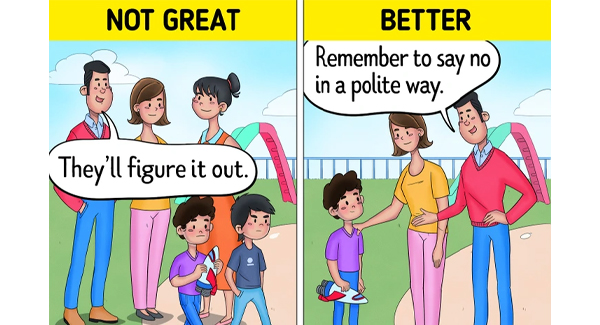Life isn’t always easy. But while adults can argue with a friend and then make up with no problem, for children, it’s not that easy, as fights with friends can feel like the end of the world. Sometimes, parents make mistakes when it comes to teaching their children how to reach a resolution in their daily conflicts.
Here are 11 tips you can use when teaching your children how to solve problems they may encounter in everyday life.
1. Help them identify their emotions.
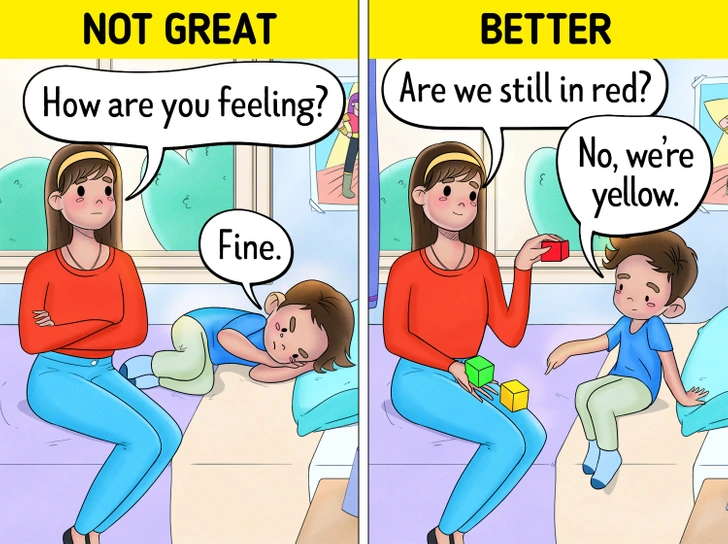
We occasionally forget that kids experience the same emotions as adults. But they simply lack the language to articulate them. Rather, they cope with them by externalizing their feelings, whether through play, whining, or facial expressions. Therefore, it’s critical that we assist kids in recognizing their feelings when they encounter conflict.
Asking them how they feel is the best method to accomplish this; steer clear of general inquiries with ambiguous responses and use targeted queries to pinpoint the feeling. Using an emotion thermometer or a visual feelings chart, you can also employ interactive and visual techniques to help the youngster connect their emotions to a facial expression.
2. Find out where the problem comes from.
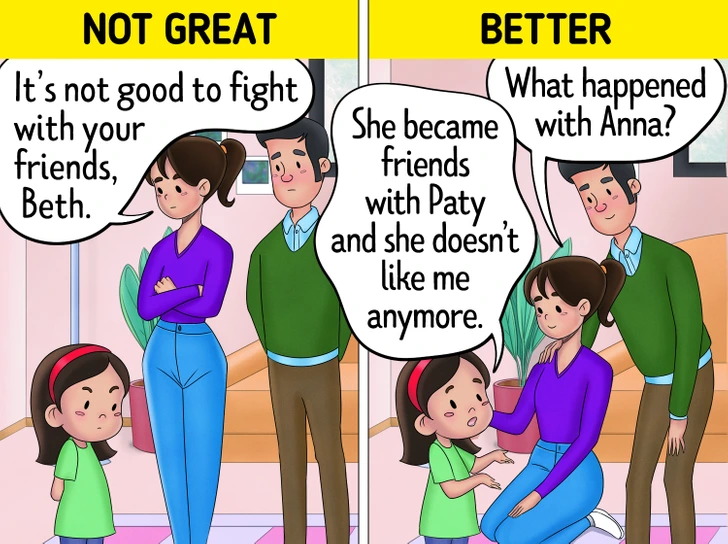
After releasing such feelings, it’s critical to comprehend the reason for the emotional outpouring. The child might be upset, for instance, if their older brother declined to play with them. This, however, could have a deeper meaning because the youngster might feel that they are being replaced by other kids or that their sibling no longer wants them.
3. Devise possible solutions.
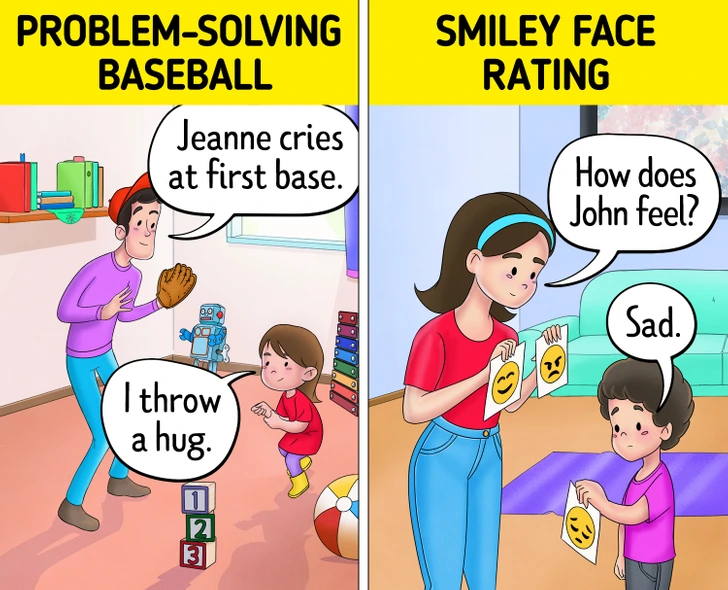
Since children must learn to put themselves in other people’s shoes, developing empathy is a necessary component of problem-solving. They will eventually develop more social skills, learn to listen to others, and be able to identify both their own and other people’s feelings.
Certain dynamics can assist people have the resources they need to deal with issues when they come up. For instance, in order to come up with a potential solution, they must toss a disagreement and go through bases in problem-solving baseball. Helping the child maintain their optimism and reassuring them that their solution is valid on some level even if it isn’t ideal are crucial.
4. Always keep things in perspective.
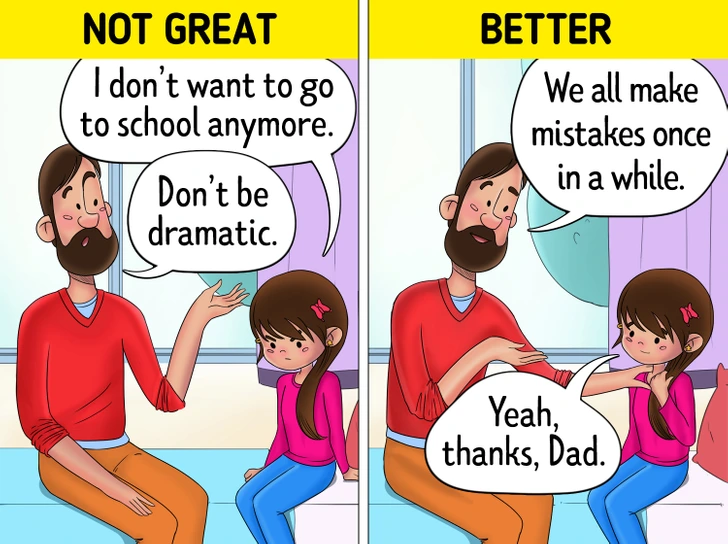
Sometimes it seems that for adults, getting the whole picture of a problem is natural and simple. However, for a child, it’s not necessarily so since a fight with a friend can feel like the end of the world.
In order for children to develop greater empathy, it is crucial to assist them in putting things into perspective. They will also be able to slow down and consider more than just what they feel happened; they will be able to consider the context and what other people are saying.
5. Brainstorm ideas.
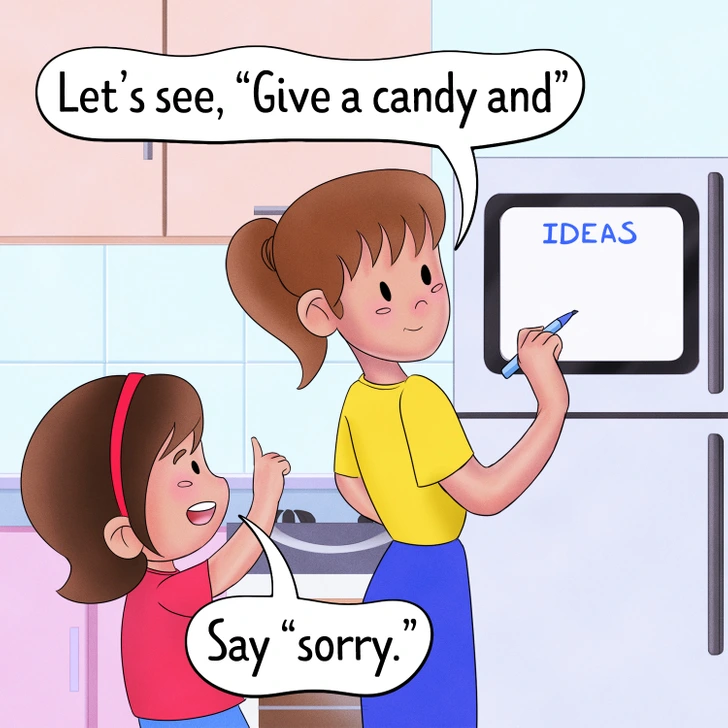
Although it sounds like a strategy that can only be applied in a work environment, it’s actually a fairly versatile method. It can be used in many contexts outside the office to improve conflict resolution skills.
Once the child has explained the problem, you might use a chalkboard and ask them to think of three possible solutions. This helps the child practice the technique and eventually makes dispute resolution easier.
6. Set an example.
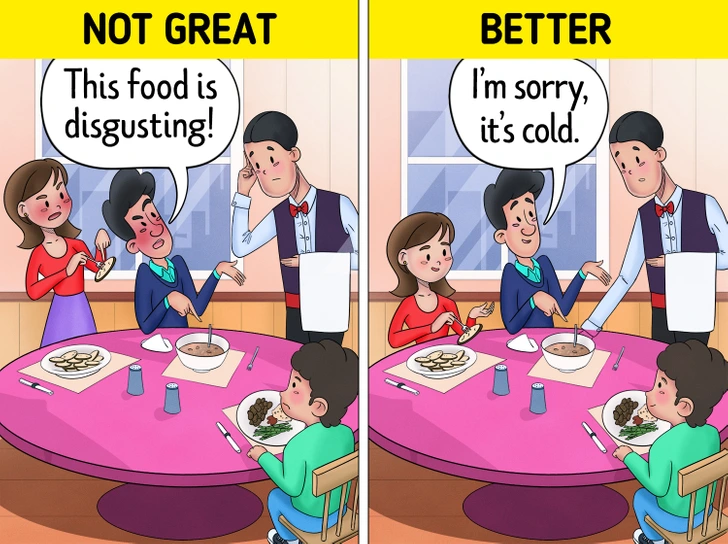
Since parents are their primary behavioral role models, children learn by copying their parents, teachers, and other kids. Remember that they will always look up to their parents as role models, so teach them empathy and how to deal with difficulties firsthand. You should thus make an effort to set the greatest example possible in order to prevent sending conflicting messages and to abide by all of the behavioral guidelines that we expect kids to follow.
For example, imagine you are in a store and are charged a higher sum on your credit card by mistake. Perhaps you might be tempted to get upset and scream at the cashier. But if instead of losing your temper you think about how your children will see you, you’ll likely calm down. In that case, you’ll probably find a good solution, which, in turn, will reinforce the message you’re trying to pass onto them: being calm and patient pays off. On the contrary, if you lose it, children will learn that throwing tantrums and yelling at employees is a good way to solve problems.
7. Create a jar of problem-solving sticks.
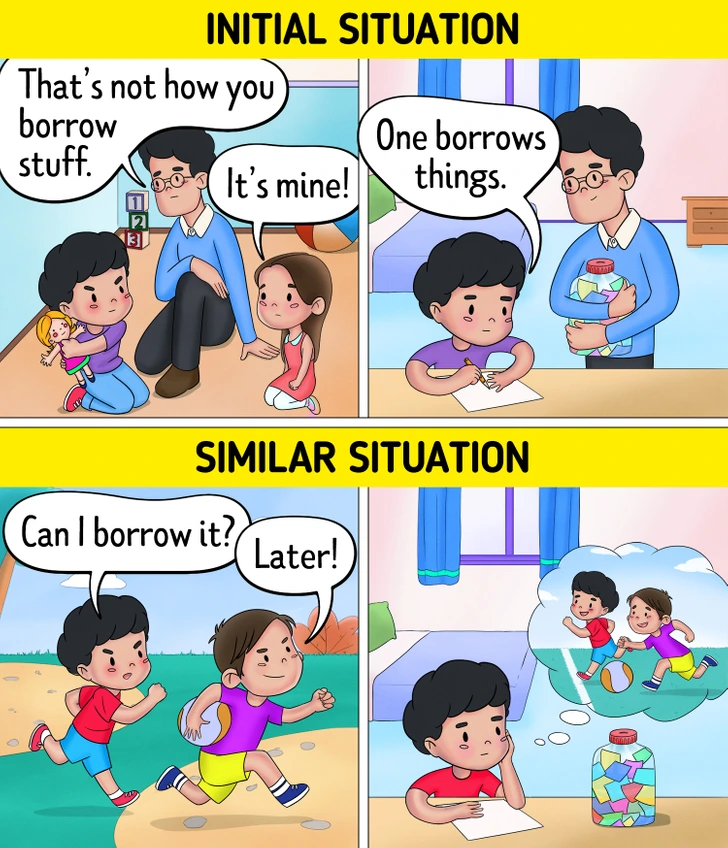
There are a number of inventive ways to make potential answers to issues accessible to kids. Putting money in a jar or vase is similar to making a jar of problem-solving sticks.
For example, if your child had a misunderstanding with a classmate and there is still no clear solution, you can talk to them about what happened and give them a hand in coming up with an option to resolve the conflict. Once they’ve reached that conclusion, the solution to that problem is written down and placed in a jar. This way, when the child has a similar situation, he/she will know what possible solution can help them just by resorting to the solution jar.
8. Use effective communication.
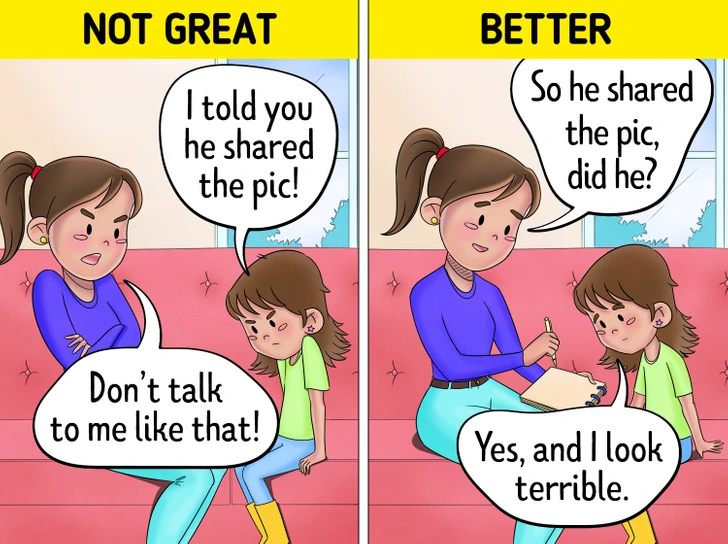
Communication is a fundamental component of problem-solving, so it’s critical to practice aggressive and effective communication with kids so they can use it in the future.
Listening to our children is crucial to helping them identify and categorize their feelings. To achieve this, you can take down the key elements of the talk or reinforce the usage of expressions like “I feel…” When you are unable to grasp what your children are trying to say, this can even be a really helpful tool.
9. There’s nothing better than a good old apology.
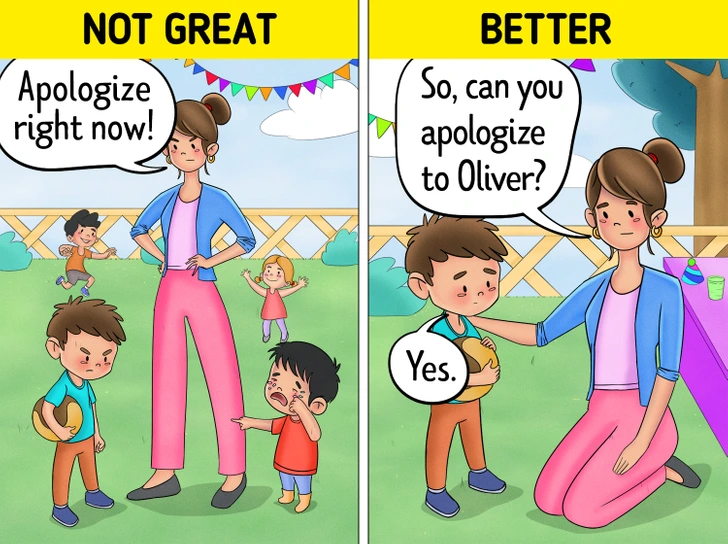
It can be challenging to explain to kids the importance of saying sorry, and occasionally we unintentionally have them apologize to someone. Without making them do anything they don’t want to do or don’t fully understand, there are ways to help them realize how important a true apology is.
Let’s say your child took some candy from a younger child at a party. Some people would demand that they apologize and return the candy to the other child right away. But actually, the best thing to do is to take the child to a quieter place to talk about what happened to understand better what was going on in their head. After that, you can ask the child questions about the other child’s feelings to develop empathy for them. Once they’ve understood why their behavior was inappropriate, they’ll be ready to give a genuine apology to the other child.
10. Follow up.
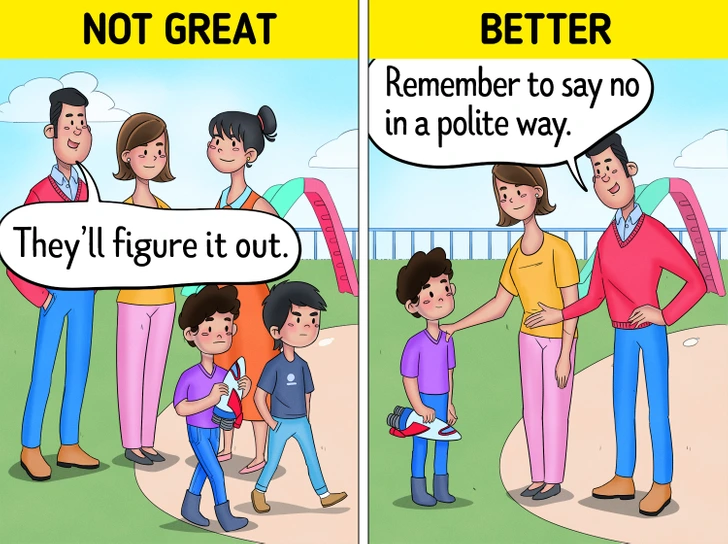
It’s wise to follow up even if the disagreement appears to have been resolved to ensure that the youngster understood the lesson and that the problem-solving technique was effective.
For example, your older son was playing a video game and his younger brother wanted to borrow it for a while, but your older son refused. After making your son understand that he must lend his video game to his younger brother for an hour, instead of leaving them alone, it’s better to make sure that what was agreed upon is followed through, and be on the lookout for another argument to further reinforce the lesson to the older son.
11. Use role-playing games.
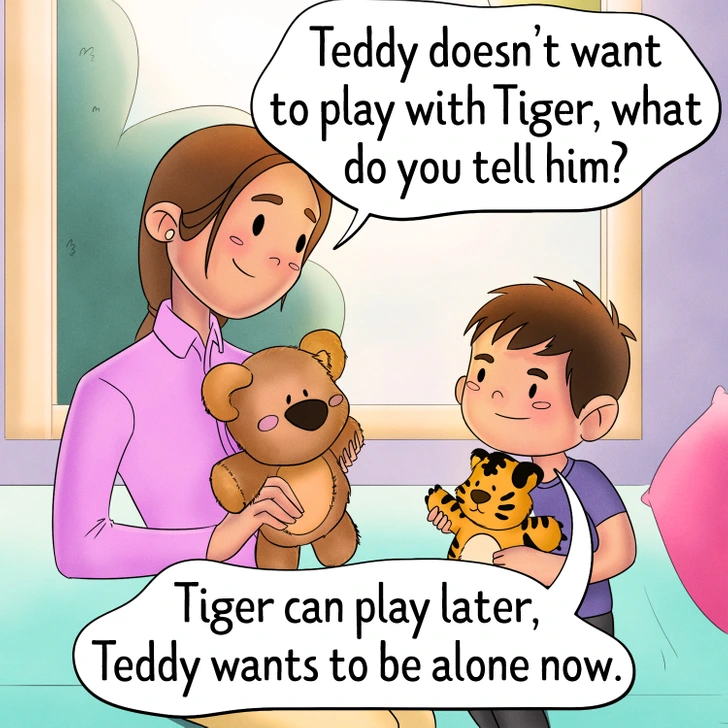
Children not only learn by imitation, but also by play. To help them develop their creativity and problem-solving abilities so kids may learn organically over time, role-playing is a great technique. For instance, we can set up a scenario and role-play potential solutions using the toys our kids have.
